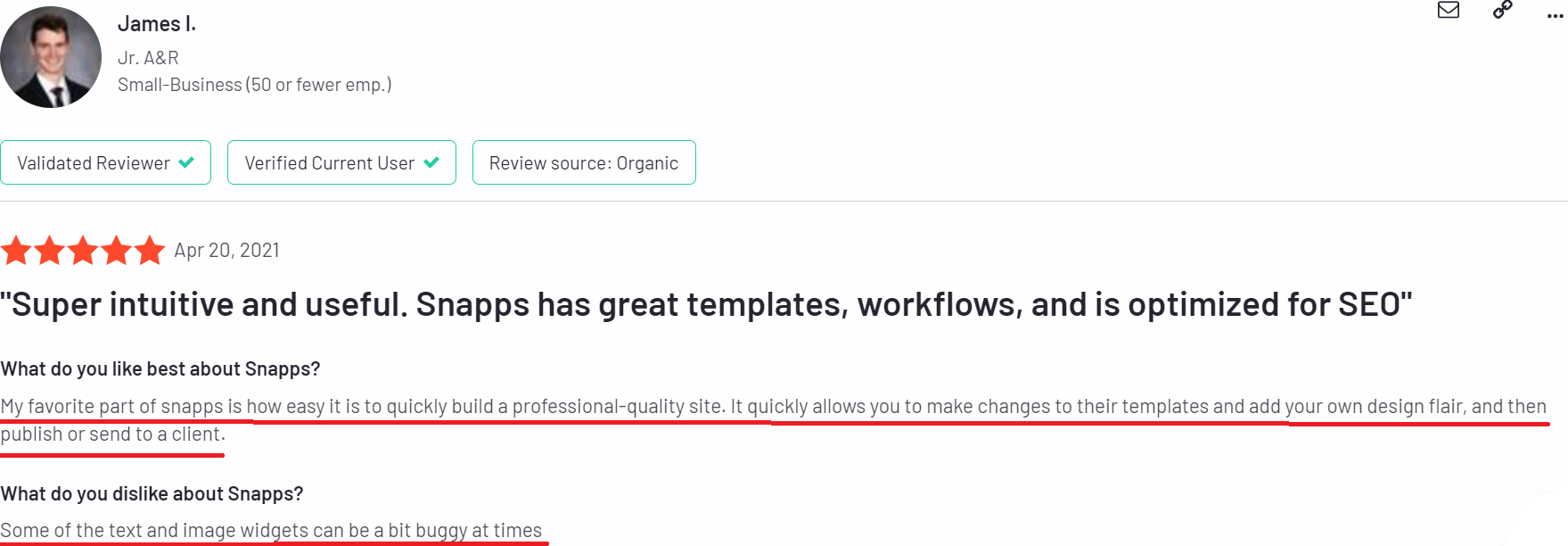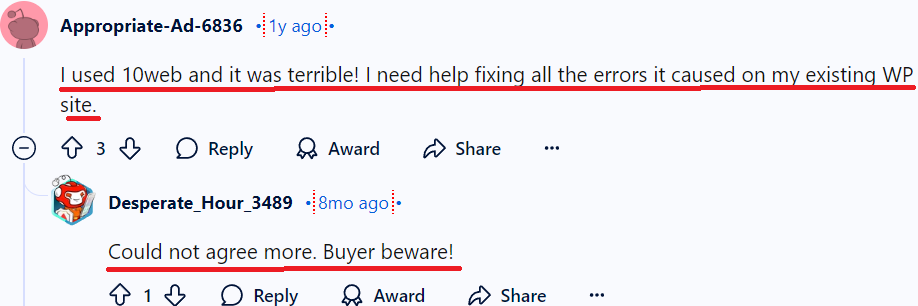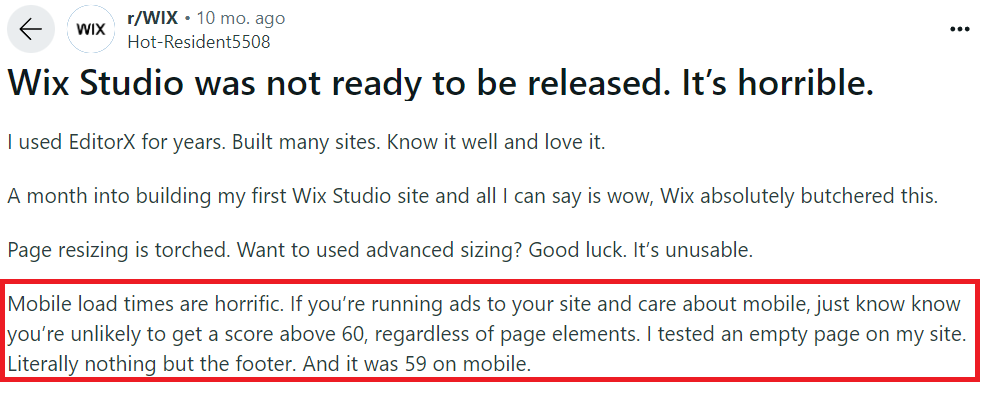In a YouTube video, Wes McDowell explains that first impressions of websites are formed almost instantaneously — within 1/50th to 1/20th of a second. Google's research shows that simpler websites are consistently rated as more beautiful than visually complex ones. Users expect service businesses to follow prototypical layouts that feel familiar and easy to navigate.
Snapps courses are now available
The best website builders for solar panel installation services are:
- Snapps.ai
- Squarespace
- Webflow
- 10Web
- Wix
The best website builder lets you create easy-to-navigate sites. It provides customers with valuable information about solar panel costs, maintenance, and compatibility with different roof types. It also allows you to highlight your experience and showcase successful installations.
In this article, we will talk about the best website builders you can choose from. We will also tackle its key features, lead generation features, and downsides.

The solar industry is highly competitive, and a well-designed website helps differentiate your business from competitors. This differentiation is crucial for standing out in a crowded market. It can be a game-changer for your solar company. It acts as a 24/7 sales representative, showcasing your services and expertise to potential customers around the clock.
Your website is often the first impression customers have of your business. It can help you build trust with potential clients. A good solar website can boost your customer base, with 80% of solar businesses reporting increased growth after launching a website.
1. Snapps.ai
Snapps.ai is a cutting-edge website builder tailored for solar panel installation businesses. It uses AI to create custom websites quickly. It offers specialized functionalities that streamline service promotion and customer engagement in this industry.
Here are the key features that make Snapps.ai a strong choice:
- Industry-Specific Templates
- Mobile-Optimized Designs
- SEO Optimization
- Appointment Scheduling:
- Testimonial and Project Showcase
- Quick Page Load Times
- Analytics and Reporting
According to a review, you can quickly build a professional-quality website with Snapps.ai. It lets you change your templates and add your design. He also mentions that Snapps features great templates, workflows, and search engine optimization.

Snapps.ai provides lead capture functionality to help solar power installation services convert website visitors into potential customers. Here’s the list:
- Customizable Lead Forms: Snapps.ai allows businesses to create forms that can be tailored to capture essential client details.
- Pop-Up Forms: These are triggered by user actions (e.g., scrolling or exiting) to capture leads who may not engage with the main content. This feature helps retain potential customers before they leave the website.
- Call-to-Action (CTA) Buttons: Strategically placed CTA buttons encourage users to act immediately.
- Appointment Scheduling Integration: Potential customers can book consultations or meetings directly through the website. This helps convert interested visitors into leads ready to discuss solar panel installations.
- Multi-Step Forms: These forms break down the lead capture process into smaller, more manageable steps. It can reduce form abandonment and increase conversion rates.
- Lead Magnet Integration: Businesses can offer downloadable content (like guides or checklists) in exchange for a visitor’s emai.
- Exit-Intent Forms: These forms appear when a user is about to leave the site. It offers a final opportunity to capture their details or offer a discount/consultation before they exit.

2. Squarespace
Squarespace offers sleek, modern designs perfect for showcasing solar panel installations. Its visual editor makes it easy to create a professional-looking website. With Squarespace, you can create an attractive solar energy website that displays your work. It has an e-commerce function that allows you to sell solar products directly from your site.
Here are the key features that make Squarespace a good choice:
- Professional Templates
- Mobile Optimization
- Integrated Scheduling and Appointments
- Portfolio and Project Display
- E-Commerce Capabilities
Squarespace also provides the following:
- Form Integrations: Squarespace forms can be integrated with popular email marketing platforms.
- Pop-up Forms: It creates pop-up forms that can be timed or triggered by specific actions (e.g., after scrolling a page or after a set time).
- Call-to-Action Buttons: Squarespace supports easily placing customizable call-to-action buttons.
Although it offers great features, Squarespace lacks in its customer service. A Redditor has expressed dissatisfaction with Squarespace's customer support. The absence of phone support means issues must be resolved through live chat or email, which can be slow and frustrating.

3. Webflow
Webflow gives you more control over your website's design and functionality. It lets you create a solar website with interactive elements to engage potential customers. You can easily showcase your solar panel installations and explain your process.
Here are the key features that make Webflow suitable for solar panel installation services:
- SEO Optimization
- CMS for Project Showcases
- Third-Party Integration
- Performance Optimization
- E-Commerce Capabilities
Webflow also provides the following:
- Customizable Forms: Webflow creates custom lead capture forms. These forms can be tailored to collect essential information such as contact details, project requirements, or preferred consultation times.
- CRM Integration: It integrates with popular customer relationship management (CRM) systems.
- File Upload Field: Webflow’s forms can include file upload fields, allowing users to submit relevant documents.
- Real-Time Notifications: It sends real-time email notifications when a form is submitted.

A review on YouTube highlighted that while Webflow is powerful, it can be quite complicated compared to other website builders. It requires a certain level of technical skills to utilize its capabilities fully. This can be challenging for users who do not have a background in web development or design. The platform's advanced features might not be easily accessible to those without experience.
4. 10Web
10Web is an AI-powered website builder with hosting included. It's a good option for solar installers who want a quick, easy solution. With 10Web, you can quickly build a site to promote solar panel installation services. Its speed optimization functionalities ensure your site loads quickly, which is crucial for keeping potential customers engaged.
Here is what makes 10Web ideal for solar panel installation services:
- AI Website Builder
- Mobile-Responsive Design
- Fast Loading Times
- Automated Backups and Security
10Web also provides lead capture features designed to help solar panel installation services:
- Pre-Built Form Templates: 10Web provides pre-designed form templates. It can be customized and used for lead capture purposes.
- Email Notifications: Businesses receive real-time email notifications when a form is submitted.
- Pop-Up and Embedded Forms: It supports pop-up and embedded forms. This allows businesses to capture leads through different engagement methods.
- Form Integrations: 10Web forms integrates with email marketing tools like Mailchimp or Sendinblue.
A user on Reddit expressed frustration with 10Web, stating that it caused numerous errors on their existing WordPress site. Most users found the platform difficult to work with, especially when trying to edit or modify website elements created by 10Web's AI.

5. Wix
Wix offers a wide range of templates and features suitable for solar businesses. It allows you to create a solar energy website with functions like appointment booking and customer testimonials. It also has an App Market that provides additional tools to enhance your website's functionality.
Here are the key features that make Wix suitable for solar panel installation services:
- SEO Optimization Tools
- Mobile Responsiveness
- Appointment Booking System
- Wix Chat and Automation
- Analytics and Reporting
Wix also offers the following solar panel installation businesses:
- Wix Forms App: The Wix Forms app provides pre-built templates for various purposes. It includes contact, quote requests, and feedback forms.
- Lead Capture with Wix Chat: Wix Chat allows businesses to engage with visitors in real time. The chat feature can be automated to greet visitors and encourage them to leave their details.
- Integrated Appointment Scheduling: With Wix’s built-in appointment booking feature, visitors can schedule consultations or service appointments directly through the website.
- Lead Generation Insights: It has built-in analytics tools that track the performance of forms and lead capture elements.
A Redditor has criticized the Wix Editor for being buggy and not providing a mobile-friendly experience. It says mobile load times are poor, and even an empty page scored low on performance tests.

Choosing the Right Website Builder for Solar Panel Installation Services
- Ease of use. When choosing a website builder, look for platforms with intuitive interfaces. Drag-and-drop editors make it simple to design pages without coding knowledge. Many builders offer pre-made templates tailored for service businesses. You'll also want to pick a builder that allows quick updates to your solar installation portfolio and service offerings.
- Customization options. Your solar panel installation website should reflect your brand identity. Choose a builder with flexible design options to match your logo and color scheme. Consider builders allowing you to create custom forms for quote requests or consultations. This feature can help you generate leads directly from your website.
- Integration capabilities. Your website should work seamlessly with other tools you use in your solar panel installation business. Look for builders that offer integrations with customer relationship management (CRM) systems, email marketing platforms, social media accounts, and online scheduling tools.
- Cost-effectiveness. Consider your budget when choosing a website builder. Many offer tiered pricing plans with different features at each level. Free plans can also be a good starting point, but often come with limitations.
Key Features Your Solar Panel Service Websites Should Have
- Responsive design. Your solar website must work well on all devices. A visually appealing design is crucial for making a good first impression. Use a layout that adjusts to different screen sizes. Make sure text is easy to read on phones and tablets. Buttons should be big enough to tap on mobile devices. Test your site on various devices to ensure a smooth experience.
- Lead capture forms. Add contact forms to your website to collect potential customer information. Place these forms in visible areas like the homepage and service pages. Keep your forms short and simple. Ask for essential details like name, email, and phone number. Include a brief message field for customers to describe their needs. Consider adding a pop-up form for special offers or newsletters. But don't make it too intrusive for visitors.
- SEO-ready structure. Build your website with search engines in mind. Use a clear site structure with a logical page hierarchy. Create separate pages for different services or solar panel types. Use descriptive, keyword-rich URLs for each page. Write unique title tags and meta descriptions for all pages. Include relevant keywords in your headings and content. Make sure your site loads quickly, as speed is a ranking factor. Use alt text for images to help search engines understand your visual content.
- High-resolution galleries. Showcase your solar installations with high-quality photos. Create a gallery page with clear, professional images of your completed projects. Include before and after shots to demonstrate the impact of solar panels. Add captions to explain each project's details, like energy savings or system size.
- Site performance and hosting. Choose a reliable hosting provider to ensure your site stays online. Look for hosts that offer good uptime guarantees and fast server response times.
What are the Key Pages to Have on Your Solar Website?
- Home Page: This is your first impression. Make it count with a clear message about your solar services.
- About Us: Tell your story and show why you're the best choice for solar installation.
- Services: List all the solar services you offer. Be clear about what you do.
- Products: Show the types of solar panels and equipment you use. Include specs and benefits.
- FAQ: Answer common questions about solar energy and your services.
- Contact: Make it easy for people to reach you. Include a form, phone number, and address.
- Blog: Share helpful solar tips and industry news to build trust with readers.
- Testimonials: Let happy customers speak for you. Their words can convince others.
- Financing Options: Explain how people can pay for solar panels. This helps remove cost barriers.
- Gallery: Show off your best work with photos of completed solar installations.
Maximize User Experience (UX) on a Solar Panel Installation Website
- Navigation efficiency. Your website's navigation should be simple and intuitive. Use clear labels for menu items and keep the structure shallow. Limit main menu options to 5-7 items. Create a logical hierarchy for your content. Group related information together. For example, put all service details under the "Services" tab. Include a search function to help visitors find specific information quickly. Place it in a visible spot, like the top right corner of your site.
- Mobile compatibility. Your solar website must work well on smartphones and tablets. You should use a responsive design that adapts to different screen sizes. Ensure buttons and links are large enough to tap easily on mobile devices. Leave enough space between clickable elements to prevent accidental taps. Optimize images and videos for faster loading on mobile networks. Compress files without sacrificing quality.
- Call to action placement. Strategic placement of calls to action (CTAs) can significantly impact your conversion rates. You should place your main CTA above the fold on your homepage. Use contrasting colors for CTA buttons to make them stand out. Also, make the text action-oriented, like "Get a Free Quote" or "Schedule a Consultation." Include CTAs at natural decision points throughout your site. For example, add a "Contact Us" button at the end of your services page.
What are the Latest Solar Trends You Should Know?
- Improved efficiency: New solar panel technologies are boosting energy conversion rates. This means more power from fewer panels.
- Smart energy storage: Better batteries let you store excess energy for nights and cloudy days. This increases your system's overall usefulness.
- Bifacial panels: These panels capture sunlight from both sides. They can increase energy production by up to 30% in some cases.
- AI integration: Artificial intelligence is being used to optimize solar systems. It can predict energy needs and adjust panel angles for maximum output.
- Sleek designs: Solar websites now showcase panels that blend with your home's architecture. This makes solar installations more visually appealing.
- Interactive tools: Many solar company websites now offer virtual design tools. You can see how panels would look on your roof before buying.
- Financial specifics: Solar sites are providing clearer information about costs and savings. This helps you make informed decisions about installation.
What is the Best Website Builder for Solar Panel Installation Businesses?
Snapps.ai is the best website builder for solar panel installation businesses. With Snapps, you can build websites faster than with other platforms. It offers features tailored to service businesses like solar installers. It lets you showcase your work, list services, and add contact forms to generate leads. The platform is great for both new and growing solar businesses. It helps you get noticed online and reach more potential customers. Snapps also allows you to scale your website as your solar installation business grows.
Recent Articles
Our Support Heroes Are Here For You
Don’t waste time on tedious manual tasks. Let Automation do it for you. Simplify workflows, reduce errors, and save time for solving more important problems.



